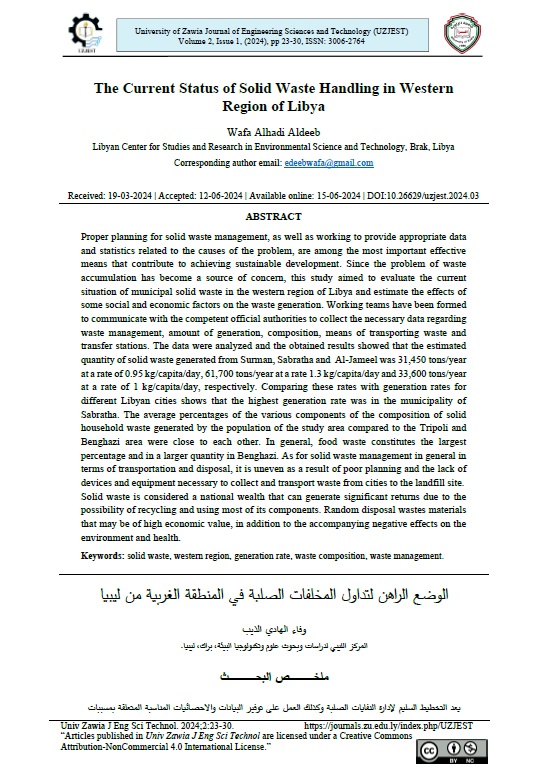The Current Status of Solid Waste Handling in Western Region of Libya
Main Article Content
Abstract
Proper planning for solid waste management, as well as working to provide appropriate data and statistics related to the causes of the problem, are among the most important effective means that contribute to achieving sustainable development. Since the problem of waste accumulation has become a source of concern, this study aimed to evaluate the current situation of municipal solid waste in the western region of Libya and estimate the effects of some social and economic factors on the waste generation. Working teams have been formed to communicate with the competent official authorities to collect the necessary data regarding waste management, amount of generation, composition, means of transporting waste and transfer stations. The data were analyzed and the obtained results showed that the estimated quantity of solid waste generated from Surman, Sabratha and Al-Jameel was 31,450 tons/year at a rate of 0.95 kg/capita/day, 61,700 tons/year at a rate 1.3 kg/capita/day and 33,600 tons/year at a rate of 1 kg/capita/day, respectively. Comparing these rates with generation rates for different Libyan cities shows that the highest generation rate was in the municipality of Sabratha. The average percentages of the various components of the composition of solid household waste generated by the population of the study area compared to the Tripoli and Benghazi area were close to each other. In general, food waste constitutes the largest percentage and in a larger quantity in Benghazi. As for solid waste management in general in terms of transportation and disposal, it is uneven as a result of poor planning and the lack of devices and equipment necessary to collect and transport waste from cities to the landfill site. Solid waste is considered a national wealth that can generate significant returns due to the possibility of recycling and using most of its components. Random disposal wastes materials that may be of high economic value, in addition to the accompanying negative effects on the environment and health.

